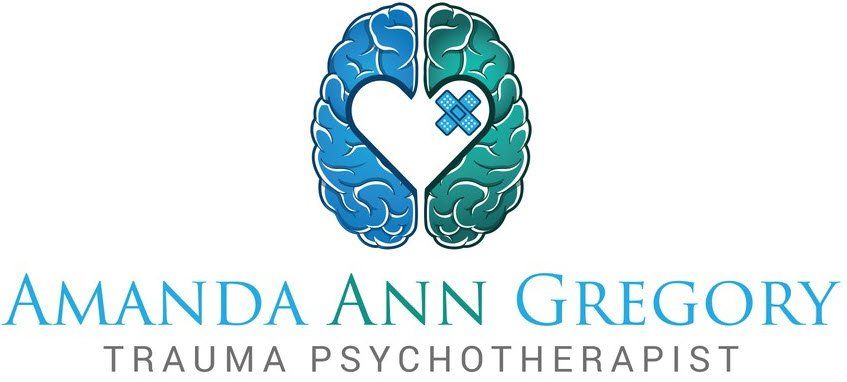T R A U M A
T H E R A P I S T
F A Q s
- What's trauma?
The American Psychological Association (APA) defines trauma as “any disturbing experience that results in significant fear, helplessness, dissociation, confusion, or other disruptive feelings intense enough to have a long-lasting negative effect on a person’s attitudes, behavior, and other aspects of functioning. Traumatic events include those caused by human behavior (e.g., rape, war, industrial accidents) as well as by nature (e.g., earthquakes) and often challenge an individual’s view of the world as a just, safe, and predictable place.”
I define trauma not as an event but rather as a particular response (whether conscious or unconscious) to a disturbing event or experience. A person can be exposed to war, a natural disaster, or child abuse yet not suffer from any long-term negative repercussions. However, a person who experiences or exhibits prolonged distress as a result of such events is someone who suffers from trauma. Bad events may or may not be traumatic, and they may be traumatic to varying degrees of severity.
- What experiences are considered traumatic?
A traumatic event can be any event that is frightening, distressing, disturbing, or that threatens one’s physical or emotional safety. Some common traumatic events are physical, emotional, sexual, or financial abuse, acts of violence, war, natural disasters, bullying or harassment, the loss or death of a loved one, the loss of a job, a breakup, abandonment/neglect, racial, gender, or sexual discrimination, social ostracism, and disruptions in a child’s family unit or source of care (e.g., divorce, adoption, the death of a parent, the incarceration of a parent, or a radical decline in economic circumstances).
- What’s complex trauma?
The National Child Traumatic Stress Network (NCTSN) defines complex trauma as “both children’s exposure to multiple traumatic events—often of an invasive, interpersonal nature—and the wide-ranging, long-term effects of this exposure. These events are severe and pervasive, such as abuse or profound neglect. They usually occur early in life and can disrupt many aspects of the child’s development and the formation of a sense of self. Since these events often occur with a caregiver, they interfere with the child’s ability to form a secure attachment. Many aspects of a child’s healthy physical and mental development rely on this primary source of safety and stability.”
- Is trauma common?
Unfortunately, trauma is very common. Here are a few statistics:
- The National Council for Behavioral Health reported that 70% of adults in the U.S. have experienced a traumatic event at least once in their lives, which equals 223.4 million people.
- The Substance Abuse and Mental Health Services Administration (SAMHSA) reported that more than two thirds of children reported experiencing at least one traumatic event by age 16.
- The National Center for PTSD reported that about 6 of every 10 men and 5 of every 10 women experience at least one trauma in their lives.
- What are common symptoms of trauma?
There are many physical and emotional symptoms of exposure to trauma. Some people have many symptoms while others might just have a few. This list is NOT exhaustive, but is simply a list of some of the most common symptoms I’ve encountered:
- Physical Symptoms: muscle tension, numbness, restricted breathing/heavy chest/lump in throat, chronic pain, migraines/headaches, GI issues, feeling disconnected from one’s body.
- Emotional Symptoms: depression, anxiety, irritability, dissociation, nightmares, depersonalization, low self-worth/low self-esteem, self-sabotage, attachment issues, feeling unsafe with others or in the world.
- What’s Post Traumatic Stress Disorder (PTSD)?
PTSD is a clinical diagnosis associated with trauma. You must meet certain criteria to qualify for a diagnosis of PTSD. See the full criteria HERE.
- Do you need to have PTSD in order to engage in trauma therapy?
No. In fact, many people participate in trauma therapy without a diagnosis of PTSD. Many of my clients have experienced trauma yet don’t meet the criteria for PTSD. They might have a different diagnosis, such as an Adjustment Disorder, Depression Disorder, Substance Use Disorder or Generalized Anxiety Disorder. Yet, it’s their trauma responses to certain events or circumstances that make them good candidates for trauma therapy.
- Can trauma be healed?
Yes. With treatment, many survivors of severe, complex trauma have experienced fewer and less severe trauma reactions and symptoms over time. Trauma is not something that one can simply forget or suppress, as it’s an indelible part of one’s history and will always affect one’s lived experiences. For this reason, I think the notion that one can “heal” trauma is misleading; rather, I prefer to say that trauma may be “transformed.”
- What are the best trauma therapy approaches?
I believe in the efficacy of of bottom-up approaches to trauma treatment. These approaches access the oldest parts of the brain (i.e., the brain steam and limbic system) where trauma usually lives and thrives. Top-down approaches tend to access evolutionarily newer parts of the brain (e.g., the prefrontal cortex), which may not store traumatic memories and emotions.
- What are bottom-up trauma treatment approaches?
Here are a few of my favorites:
- Eye Movement Desensitization and Reprocessing (EMDR) therapy utilizes bilateral stimulation to access and transform trauma.
- Somatic Experiencing (SE) therapy focus on the body as a method to transform trauma.
- Internal Family Systems (IFS) therapy focuses on subpersonalities of the mind as a method to transform trauma.
- Expressive Arts Therapy uses a variety of art forms to transform trauma.
- Theraplay is a dyadic family therapy method that supports healthy child/caregiver attachment.
All Rights Reserved | Amanda Ann Gregory, LCPC
Design & Consultation by Teresa Lauer, LMHC, GrowYourTherapyPractice.com *

